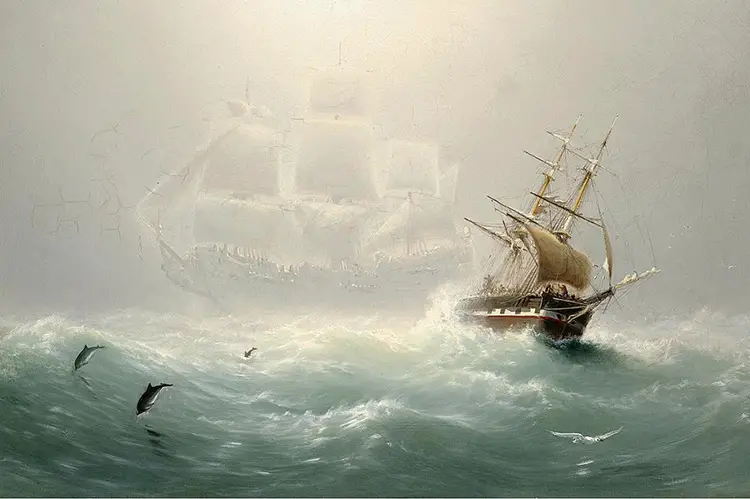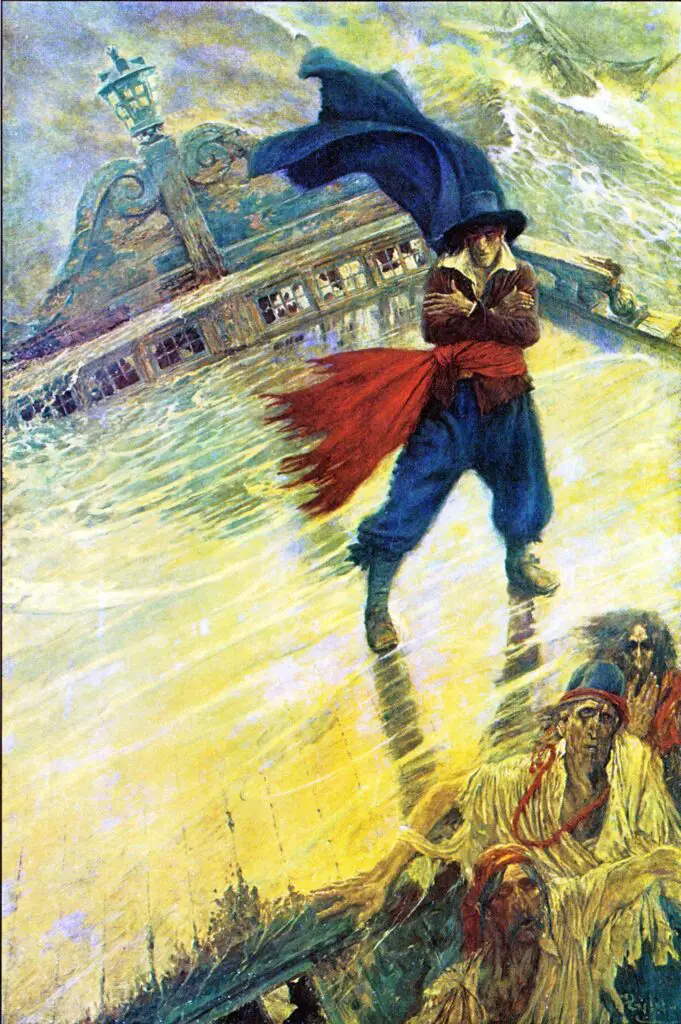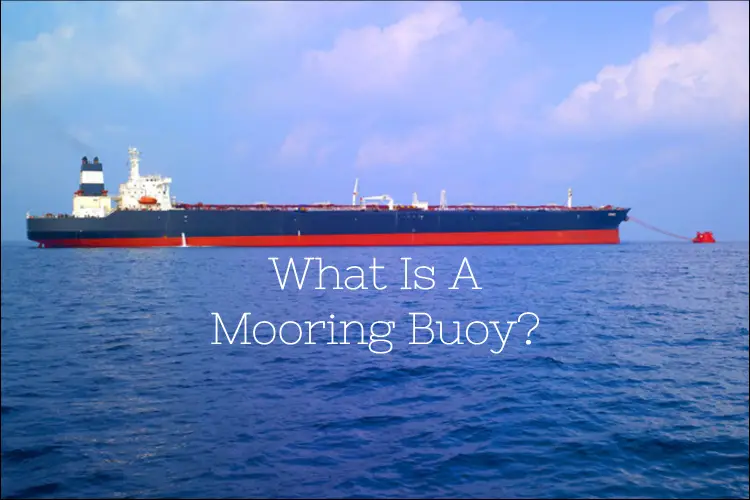Legend Of The Flying Dutchman

The sea has its own share of superstitions that have left an indelible impression on sailors and people who lead their lives close to the sea for centuries. One such enduring myth has been the legend of the Flying Dutchman.
It would be quite easy to pass off these stories as imaginary tales by drunken sailors and fishermen but let’s not forget that myths have some basis. They are not fully constructed out of imagination.
“After all, I believe that legends and myths are largely made of ‘truth’, and indeed present aspects of it that can only be received in this mode; and long ago certain truths and modes of this kind were discovered and must always reappear.”
― J.R.R. Tolkien, The Letters of J.R.R. Tolkien
The truth is that whatever is actually seen is blown out of proportion while relating the tale and this gives it a mixture of the sense of mystery, awe, and sometimes even fear. Several of these superstitions become so popular that they attain the level of myth and legend. Their popularity rises as the stories are told not just orally but also start appearing in movies and books. One such myth is that of the legendary ghost ship called the Flying Dutchman.
Read more sea legends: The Unsolved Mystery Of Devil’s Sea [Dragon’s Triangle]
Like every other myth, the legend of the Flying Dutchman has some factual roots. There are several other stories about ghost ships but none so popular and eerie as the Flying Dutchman. As more and more people claim to have seen the ghost ship, the stories and descriptions become more and more spooky and unimaginatively imaginable. Every person relating the story of how he came across the legendary ship adds some imaginative flair of their own to make it sound more intriguing.
The general story of the myth is that of a ship that is cursed to sail forever (‘until doomsday’) for it cannot make port owing to rough waters. The legend dates back to the 18th century when some sailors came across a ghost ship that forewarned them of impending disaster.
Reports of such spectral ships had persisted for 250 years. Since then it has been portrayed in several books and movies, the most popular probably being Disney’s Pirates of the Caribbean series, more particularly the ‘Dead Man’s Chest’ (2006). Other movies include Pandora and the Flying Dutchman (1951). Samuel T. Coleridge’s famous poem The Ancient Mariner also makes reference to the Flying Dutchman as the messenger of ill-fate.
Also read: The Legend of Davy Jones’ Locker

The Flying Dutchman – The Origin
People have been reporting seeing it for more than 200 years. However, the descriptions keep varying. Some claim to have seen a spectral schooner under full sail. Some claim to have seen it making its way through rough water and fog. Others say that it was gaining speed on the calm waters. The myth supposedly originated from the 17th century golden age of the Dutch East India Company.
Various people have reported seeing the ghost ship in the Cape of Good Hope, which was used as a common route to go from Europe to Asia. All of these were sightings that were noted during extreme weather. The ghost ship appeared to have been caught in a storm and just when it was at the verge of colliding with the rocks it seemed to vanish into thin darkness. There have been various records of its sightings.
The first written accounts were from the late 1700s. One of the most prominent reports of such sightings was one that was made by the British Royal Naval vessel, HMS Bacchante. Prince George V was the midshipman of the ship. He reported seeing the ghost vessel at 4 o’clock in the morning. The seafarer who had first seen the spectre off the ship from the topmast, thereby making the legend of the ominous Flying Dutchman even more strong.
In 1835, a British ship was rumored to have almost collided with the ghost vessel as the ghost vessel sped towards them full sail on a stormy night. But at the very last moment before the collision, it disappeared. Another such incident was at Glencairn Beach in Cape Town in 1939. A group of people said that they had seen the vessel approached the shore under full sail (as usual) but just before hitting the shore it disappeared into thin air.
The last heard rumor related to the Flying Dutchman dates back to World War II. Reports say that a German submarine spotted the Flying Dutchman while it was passing through the east of Suez. The submarine was under the command of Nazi Admiral Karl Dönitz. Nowadays we don’t get to hear of such sightings anymore. But that in no way takes the charm and mystery away from this myth.
Captain Van der Decken
There is no unanimity in the theory regarding the name of the ghost ship’s skipper. Some folklores say that it was Captain Van der Decken and there are several tales regarding how his ship became the legend. One such story says that he was so deeply lost in thought about his seamen’s hardships that he failed to recognize the danger that the approaching storm posed.
This happened in the Cape of Good Hope and their ship got wrecked. It is believed that Van der Decken was working for the Dutch East India Company during the early 1800s and was one of the two captains of The Flying Dutchman.
The rough waters made the skipper think of establishing a settlement near the Cape of Good Hope. This was one of those times when he was traveling to Amsterdam. But as the ship started to round the cape, the ship was hit by a terrible storm. This almost caused the vessel to overturn.
The sailors were frightened and thought it would be best to turn around. This got them into an argument with the captain who ordered them to keep going forward. He ordered them to bring the ship around the cape, no matter how long they had to sail. The exact phrase he used was “until doomsday”.
The ship had already been torn apart mostly by then and the skipper’s utterance is what is said to have put a curse on the ship which forced it to keep sailing forever without ever being able to make port.
Another such story tells us how the sailors of the ship rebelled against their captain over his decision and ultimately murdered him. When the body hit the waters the ship apparently asked the captain for instructions to which the captain said that he would try to reach his destination even if that meant trying till Judgement Day.
Thus, the ship continued sailing the waters of the oceans, without ever coming to the harbor, with the ghosts of the ship trapped in it.
Another popular folklore suggests that the captain of the vessel was proud and satanic. Probably that is why he was punished. When a storm hit the cape it pulled the ship towards it despite all the efforts of the sailors to get away from it. Thus, it continues to sail forever, never getting to make port or harbor. This also tells us why most people claim to see this when there is a storm in the middle of the ocean.
Read more sea legends: The Mysteries Of The Bermuda Triangle
The Science behind the Flying Dutchman Myth
There are two kinds of people in this world: those who prefer to stand in the darkness believing everything is being controlled by some mystical or unknown force and those who want to get to the root of everything with one belief in mind– everything has a scientific explanation to it. Thus, the latter group tried to figure out what was the real reason behind such sightings and debunk the myth.
The best explanation for the sightings so far is said to be Fata Morgana, an unusual, complex, and superior mirage. This is an optical phenomenon where light refracts and bends through different temperatures of air. Fata Morgana causes significant distortions in the image of the object it actually is based on. The surface of the oceans acts as a perfect medium for this optical phenomenon. Fata Morgana causes the ship to take different forms.
Sometimes it appears to be floating in the air, sometimes it appears beneath the waves. It might also be so that an inverted image of the ship floats along with the original image. This naturally played tricks in the minds of the sailors who start thinking they are seeing a ghost, more particularly the ghost of the Flying Dutchman.
Despite the evidence and scientific explanations some people still prefer to believe in the existence of this ghost ship. The deaths that are caused can be mostly accounted for by sailors losing their minds at the sight of something so bizarre and thereby jumping off the ship. Else they die simply because they get caught in a storm and are unable to recover from that. This is obviously an outcome of the pre-notion and superstitions in their minds.
Read more sea legends: The Sea Serpent – An UNSOLVED Mystery
If they would have focussed on steering the ship properly instead of being sure of their death just because they had seen the supposed harbinger of ill-omen they might have lived a bit longer. But then the legend would not have been formed and such great literature would never have been produced. It will not be an exaggeration to say that the price of good literature is indeed very costly.







